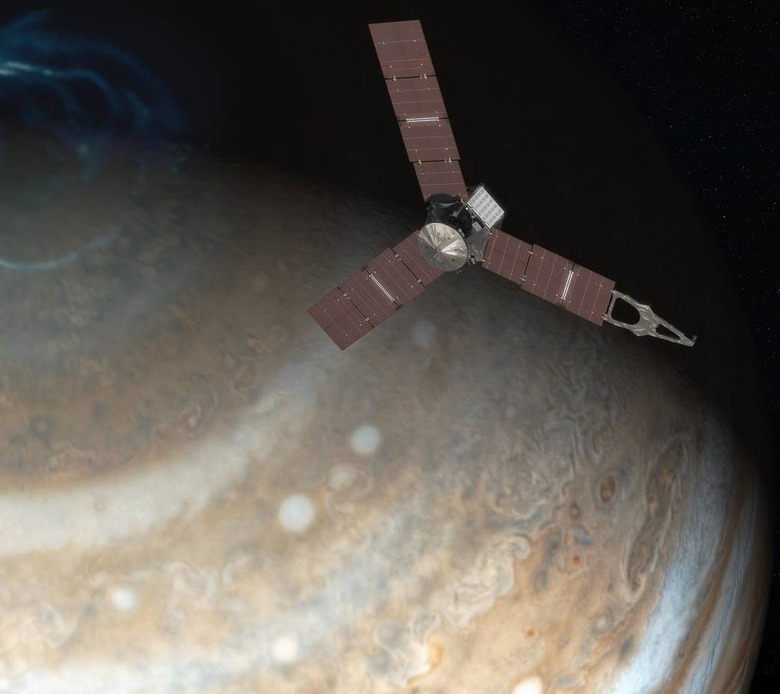Juno Probe Is Finally In Orbit Around Jupiter
Five years after it left our home, the Juno probe, aptly named after the Roman queen of the gods, has finally entered Jupiter's orbit. Although it is but a means to the probe's ultimate goal, which is, of course, studying the biggest planet in the solar system, the fact that it got to that point in one piece is nothing short of a scientific and engineering miracle. Presuming it survives the next 20 months, Juno will be able to amass a wealth of scientific data that will hopefully give further insight not only into the nature of the giant but into the origins of our solar system itself.
Juno's mission is remarkable despite not actually being the first probe sent hurtling into the planet. For the first time, it will venture closer to the planet's poles, where dangerous magnetic fields abound. That's because that is precisely what scientists want to study in this mission. Those are hoped to provide clues to the planet's composition, structure, and, of course, origins.
But getting into orbit, and staying there, is no simple walk in the galactic park. Jupiter's magnetic field is so large that is believed that if it were visible, it would be larger than a full moon seen here on Earth. As if that weren't bad enough, those fields are naturally bombarded by solar winds all the time. A hazard for any space probe. To ensure hat Juno won't be affected too much by those factors, its most sensitive electronics equipment is encased in a one-inch thick box made of solid titanium. Eventually, however, even that will prove ineffective. NASA gives it about 20 months before systems start to fail, at which point they will send Juno to its death into Jupiter.

But that's still almost two years away. For now, NASA has reason to rejoice at a mission accomplished milestone. From here, Juno will make a 53.5-day orbit around the planet to conserve fuel. But after October 19, it will go on a more intensive 14-day orbit to collect data for scientists back at home.
Success! Engine burn complete. #Juno is now orbiting #Jupiter, poised to unlock the planet's secrets. https://t.co/YFsOJ9YYb5
— NASA (@NASA) July 5, 2016
SOURCE: NASA
